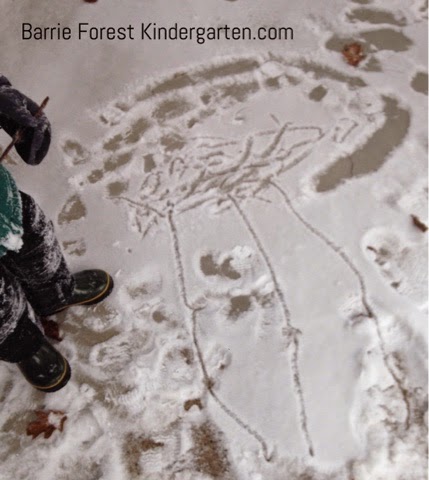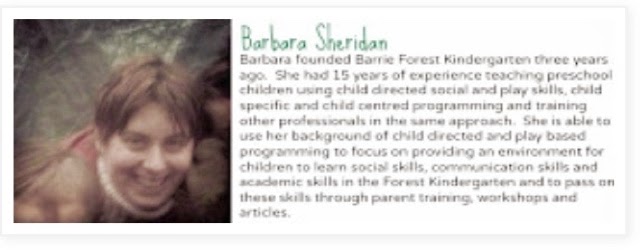This is the second post on facilitation in a two part series.
In my forest kindergarten the children are very big dragon slayers - building and fortifying their castles from dragon attack to looking for dragon tracks to actually (shudder) going to look for them in the dense woods, it is a huge group activity.
Do I get involved? The short answer is no. The longer answer is if I am needed to as part of the facilitation process.
Why? Here is one example.
We have one boy who joined us after dragons had invaded our camp. His first day here visiting he and his parents happily took part in the dragon searching. After he had been at school for a few days he watched me instead. The children were communicating wonderfully, cooperating at building a ship to escape the dragons and needed little input from me.
He pulled back and watched me for a bit. I wasn't sure if he needed something or if he was just in his own head so I waited. I stepped away - checking something out one of the kids wanted me to see. Then I stepped back. He was still watching me. He seemed to make up his mind as he turned around, grabbed a stick and started drawing on the ground.
I should interrupt to say I was thrilled. I had sat and done forest art as a provocation on and off for what seems like years. Always the same response - the kids would come see what I was doing, shrug their shoulders and go back to fighting dragons (or whatever they were engaged in at the time).
It was at this point the magic began. It was also at this point I did nothing. I could clearly see this was his process.
He started to draw. First a Popsicle, then a tree. The others came over one at a time. Much like their reaction to me when I drew they shrugged their shoulders and went back to their play. At one point when he was finished he brought me over to discuss his drawings. To ask me to take a picture. I did but was very careful to keep my enthusiasm out of his exploration. He placed a high value on his work, he needed no facilitation from me to value his work. He asked only to document so he could show his mom.
That doesn't sound very magical you may be thinking. But here's the most important part of the process. We waited.
The next day at Forest Kindergarten another boy, who is an art shoulder shrugger, picked up a stick and started to draw. This is called for all our scaffolding friends the zone of proximal development. He drew a beautiful horse, then a house, then (of course) a dragon. The other children would pop over, look at the boys drawing, admire and return to their play - much more engaged with the art than with anything I had attempted. Since then his mother reports he has become obsessed with drawing, sometimes going through a whole construction paper pad in the span of two days.
This is magical and would not have been possible if I would have been involved to a larger extent in the art creation.
Because I was not involved our artist was seen as the creator, the one with the great idea, the one who leads. At best with me involved he would be seen as co-creator, co-idea person and co-leader. At worst (and often the case when an adult is involved) his role in the activity would have been discarded completely by his peers. If I had been involved with the dragon play I would have missed the art facilitation completely and likely kept the others children's attention focused on that and they, as well, would have missed the art.
At this point some may say well what if you let him teach you. To which I respond - the kids in my Forest Kindergarten are not stupid. They know I know how to draw and me pretending to be taught would lead them to pretending to see him as creator and leader. I want real authentic community, not pretend community. There are many times when a having a child as leader is proper facilitation. This is not one.
By backing away and only responding when needed the newest boy was able to gain a valued role in the community from the other children which allowed him to learn about himself and his role in the group. The others also gained respect for the new student. Facilitating the group, not group involvement is what made real, authentic community.



No comments:
Post a Comment